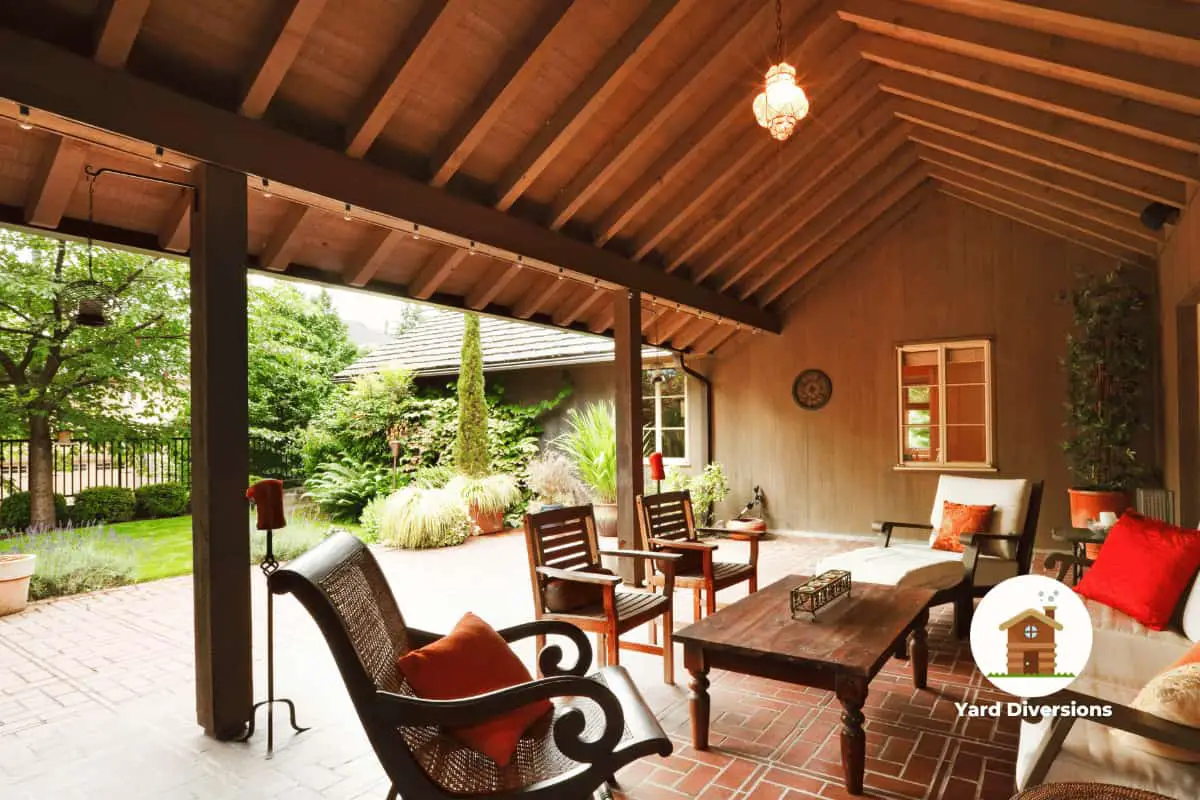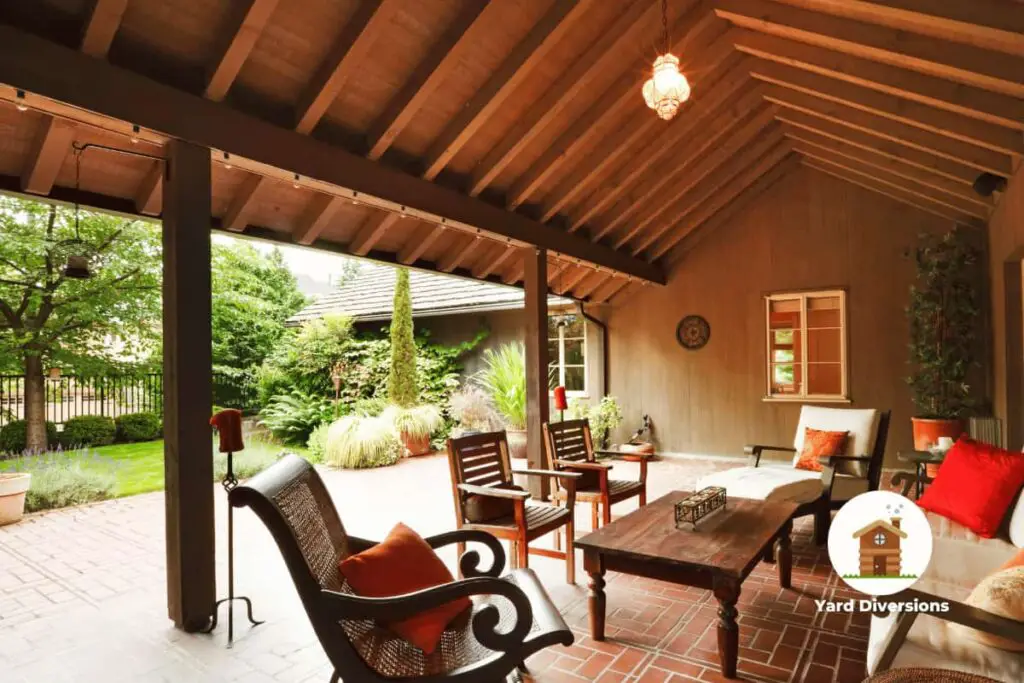Whether you want a patio, a porch, a lanai, or a veranda to enhance your outdoor area, it helps to know the difference between these structures to make an informed decision.
A patio and a porch are the two most common outdoor spaces. Porches feature a roof while patios and usually uncovered but what if you are inclined toward a covered patio? Is it possible? What do we even call a covered patio?
A freestanding covering over a patio is known as a pergola. These are often square or rectangular. Typically, they will feature latticework, with crossbeams used to create a shaded area. Occasionally, a pergola can have a retractable cover. The walls will be open.
Trying to find the right type of outdoor area for your home can be a challenge. The good news is that there are plenty of options to choose from.
Keep reading to learn about patios, porches, lanais, and verandas and understand the key differences between them.

What Is a Lanai?
This type of architecture originates in Hawaii. This is best described as an open-air porch. There will be at least one wall that opens up natural elements. It also has a hard floor and a covered roof.
Generally, a lanai will be fairly spacious. It will often be big enough to include some furniture for guests to lounge around in and enjoy the fresh air.
Sometimes, there will be a ceiling fan or a heating system installed.
There are many types of lanais available, some of the most popular options to consider:
- Flyscreen. This goes over the open wall and will keep bugs out of your lanai.
- Removable plastic or glass panels. These can be used to help insulate the area during the cold winter months.
- Blinds. These can lower heat during the summer months while working as a barrier to keep bugs out.
What Is a Patio?
This is an outdoor area that is attached to a house. It often has hard flooring, like concrete or stone pavers. These tend to be fairly large areas.
There should be enough space to add some outdoor seating. A patio is similar to a courtyard in older properties.
Usually, there aren’t any walls around a patio. Furthermore, it doesn’t tend to have a roof. Though some parts of the patio might be covered in other ways.
For example, there might be an umbrella over some sofas.
What Is a Porch?
In this case, a porch is attached to your home. Usually, it will be close to an entrance or exit point.
Though a large porch might stretch around the whole front of the house. These will have a roof, but they won’t have any enclosed walls.
Usually, the styling of the porch will be a reflection of the styling within the house. If the porch is raised, there will usually be either a series of steps or a ramp leading to the door.
The size of the porch can vary. Sometimes, they will be relatively small and built over the entrance or exit door. In this case, they might be small enough for a planter box or a small pot plant.
At other times, a porch can be a larger area, enough to accommodate a dining area.
What Is a Veranda?
A veranda will be roofed with all four sides open. Though the area will often contain the whole front or back of the house.
Sometimes, though, a veranda can wrap around the whole house. Generally, these will be larger areas. They should be able to contain some furniture.
Sometimes, a veranda will also contain a small railing around the open sides.
It should be noted that balconies will be elevated. Verandas, on the other hand, will be on the ground floor.
What Are the Main Differences Between Each Of These Options?
There are several distinctions between lanais, patios, porches, and verandas. Here are some of the largest differences.
Whether It’s Covered
The first thing to consider is what parts of the outdoor area will be enclosed. Generally:
- Lanai. Connected to the house with at least two enclosed walls. The open section might feature removable panels or blinds that can be used to close it off. Lanais have a roof.
- Patio. Tends to have three open walls and won’t have a roof.
- Porch. This will have a roof and tends to have three open walls. Sometimes, it will contain a railing.
- Veranda. Doesn’t have a roof and has three open walls. It might have a railing to enclose the space.
Size And Position in Relation To The House
You can also look at where the outdoor area is located, in relation to the rest of the house.
Here is where each of these options tends to sit:
- Lanai. This tends to sit at the rear of the house and is often connected to the home. Though Some Lanais might be freestanding structures in the backyard. It will be large enough to accommodate furniture.
- Patio. This is connected to either the front or the rear of the house. It will be big enough for furniture.
- Porch. This is located near the front or back door. It usually only stretches over the door. It is a small area, which can only handle a few people standing. Perhaps there will be a few seats, but the porch isn’t as commonly used as an entertaining area.
- Veranda. This can be at the front or rear. A wraparound veranda, though, can stretch around the whole house. If an entertaining space, it will hold furniture. Wraparound portions, though, will be a little narrower and will often be big enough for people to stand comfortably.
Other Types of Outdoor Areas
If these four options don’t quite fit your needs, there are a few other options you can explore.
These include:
- Gazebo. This is a freestanding structure, which is separate from your house. The roof will be supported by a series of posts and all the walls will be open. Traditionally, it will be a rounded shape.
- Balcony. This is a raised area. It’s attached to the house and will have open walls, though there is a railing for safety purposes. This is usually fairly small, with enough space for one or two people to stand outside. Sometimes, it will be enough for a small table or some chairs.
- Terrace. Though this is also a raised area often on a second story with open walls. A terrace is larger than a balcony. It will function as an entertaining space with the ability to hold several people. There might also be enough space to include some furniture.
Which Outdoor Space, Such as a Lanai, Patio, Porch, or Veranda, is Best Suited for Infrared Heaters?
When it comes to choosing the best outdoor space for infrared heaters for patio, a lanai is an excellent option. The enclosed nature of a lanai provides better insulation, allowing the infrared heat to remain within the space and keep everyone warm and comfortable.
Final Thoughts
Trying to decide what type of outdoor area you want to create can be a challenge.
Each comes with its own list of pros and cons. It might be best to look at a few images of each online, to find something that suits your budget and will complement your home.


